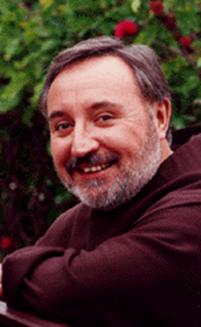|
|
In the Key of What-Next
By Abigail Trafford, the Washington Post
May 11, 2004

Forget broccoli. Forget the treadmill. Go play the violin!
Doing something creative is good for your health.
That's the conclusion of a recent study assessing the health effects of participating in music, art, dance and poetry programs.
Researchers had expected that such activities would help people feel better and perhaps slow the rate of physical decline with age.
The surprise?
People got healthier. And happier.
"After a year, we saw actual improvement," says Gene D. Cohen of George Washington University, who heads the ongoing study of about 300 men and women over age 65. The study, sponsored by the National Endowment for the Arts, the National Institute of Mental Health and other organizations, is taking place in three cities. In Washington, the "research subjects" are singers in a chorale at the Levine School of Music, a community music school with 3,500 students in the Washington area. In Brooklyn and San Francisco, the guinea pigs are mixture of writers, painters and jewelry makers.
Half of the people in the study are engaged in the cultural programs -- the "intervention arm." Half are in the "control group." Both groups are similar in health status. They all live on their own. The average age is 80. Both groups are being monitored on a range of measures from physical strength to mental health and social behavior.
Preliminary findings, released late last month, point to impressive benefits of a creative fitness regimen. After a year, those in the cultural study group were healthier than they were when the study began. They were also in better shape than those in the control group. They reported better overall health, fewer doctor visits, less use of medications, fewer falls and hip damage. They also reported less depression, less loneliness and higher morale.
All this suggests that mental activities play a significant role in health. Besides, singing in a chorus can be a lot more interesting than doing push-ups or popping tomatoes. Of course, you can do all three. It's common sense that diet and exercise matter to health. But it's nice to know that belting out Handel's "Messiah" or throwing paint on a canvas matters, too. Maybe just as much.
"Individuals can do things [in the creative arts] to affect their health and functioning," says Cohen, director of GWU's Center on Aging, Health and Humanities. "You can develop programs that make a difference. . . . These programs can lower the [medical] burden on society."
A study published in 1999 in the British Medical Journal found that in people over 65 social and cultural activities such as book clubs had the same impact on longevity and general health as physical fitness programs.
Not that you should give up jumping rope and eating vegetables. But getting in touch with your inner Beethoven may offer some special advantages.
A creative program engages the brain as well as the body. It poses a challenge -- to get better, to learn. That can lead to a sense of mastery and empowerment. Because you are part of a group, you are connected with other people. In the Washington program, men and women sing and bond, they see each other regularly for rehearsals and performances. They come to care about each other, says Cohen.
All of this improves morale and reduces the risk of social isolation, one of the well-known risks of illness and death.
Cohen says he believes that creativity is hard-wired in the species. But one of the hurdles for older people is a kind of Mozart syndrome -- the myth that if you don't start in the creative arts as a child, it's too late.
Patricia Preston of Hyattsville picked up the violin when she was 67.
For most of her life, she was a clinical social worker. For 15 years she ran an eating disorders clinic; the work was intense. When she left the clinic, she says, "I was looking forward to something completely different."
So she turned to an old dream. "I had always wanted to play the violin," says Preston, now 73. She could play the piano, mostly by ear -- pop tunes like "Blue Moon" and "Smoke Gets in Your Eyes." But she wanted to do more. "I could never play classical music well enough to satisfy myself."
During all those years working and raising a family -- she and her husband have three children and 10 grandchildren -- she kept her talent on the sidelines.
As she approached her final year at the clinic, she turned to music. At first, she rented a violin and took a couple of lessons. Then she bought her own instrument.
Six years later, she's still taking lessons. She plays in a string ensemble. She plays in a quartet. She's been studying music theory. "I feel I've gone off to conservatory -- practicing, playing, doing music theory homework," she continues. "I have a passion for it. That's what makes it so exciting."
Learning to play the violin is a challenge. "It's a very humbling experience. It's a lot harder than I ever believed it would be -- the fingering with the left hand and the bowing with the right," she explains.
But she is getting better and doing more difficult pieces. Some Handel sonatas. A little Vivaldi.
It's pleasure. It's empowerment. Her children, she says, are amazed at her performances. It's also people. She has made connections with the other musicians in the quartet and the ensemble.
To Cohen, empowerment and connection are important benefits of any creative program. "You have individual mastery and interpersonal growth," says Cohen, author of "The Creative Age: Awakening Human Potential in the Second Half of Life" (HarperCollins, 2000). "The nature of the work keeps you engaged."
And for Preston, there's another bonus: playing Bach duets with her 13-year-old granddaughter, who is also learning the violin.
|
|




